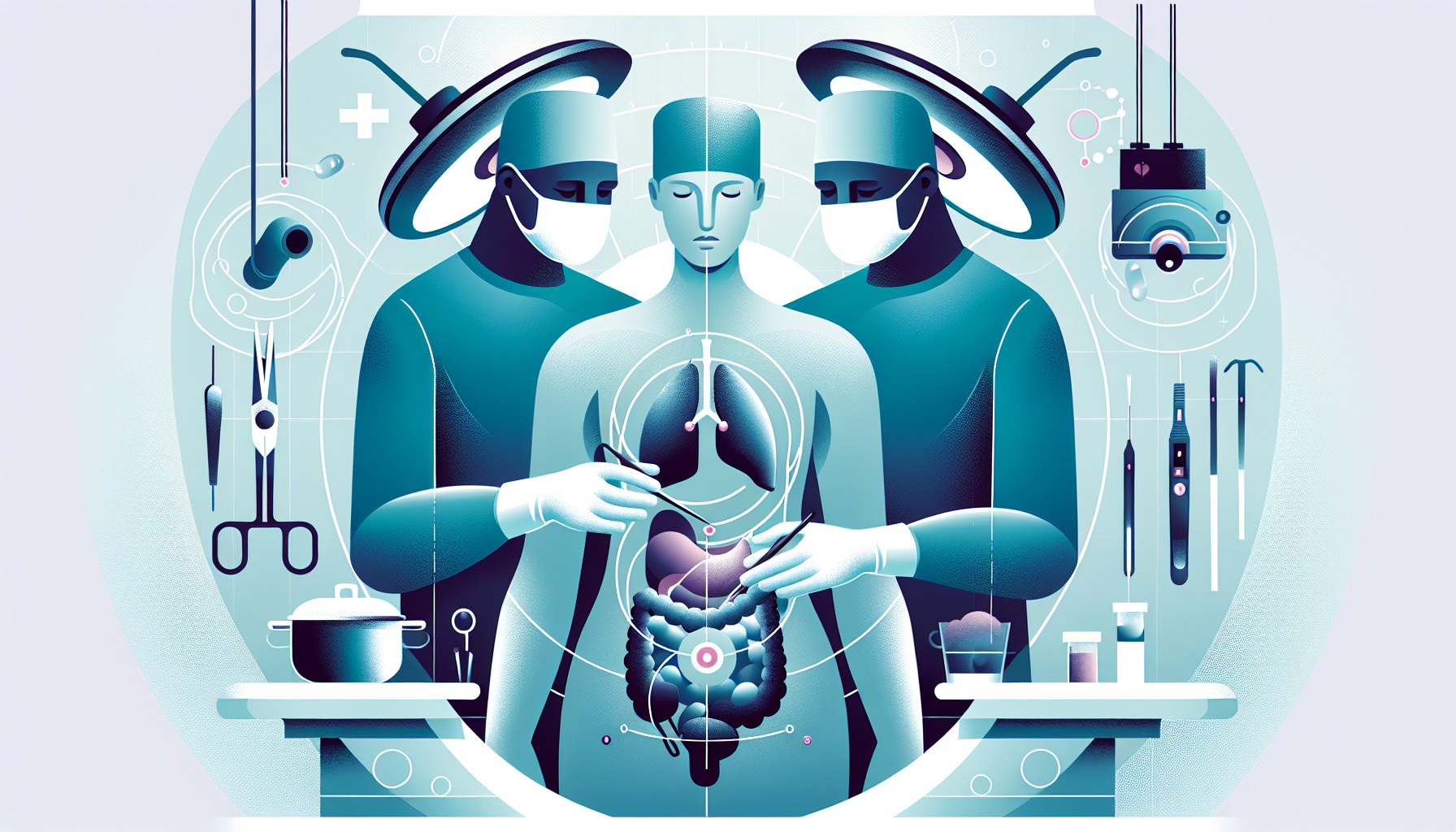Our Summary
This research paper is about the use of robotic surgery in treating a condition called left-sided colonic diverticulitis, which is an inflammation or infection in one or more small pouches in the digestive tract. The researchers used the da Vinci Xi system, a type of robotic surgical system, and compared the results to those of traditional laparoscopic surgery, which is a minimally invasive procedure performed through small incisions.
They compared data from 22 patients who had laparoscopic surgery and 20 patients who had robotic surgery. The results showed that there were no significant differences in terms of patient demographics, clinical characteristics, operation time, and post-surgery complications between the two groups. However, in the laparoscopic group, there were three instances where the surgeons had to switch to open surgery, while there were no such instances in the robotic group. This change to open surgery was associated with post-operative complications.
So, the conclusion is that robotic surgery could be a viable alternative to laparoscopic surgery for treating left-sided colonic diverticulitis. Moreover, it could potentially reduce the risk of complications by eliminating the need to switch to open surgery.
FAQs
- What is the da Vinci Xi system used for in relation to colorectal surgery?
- How does robotic surgery compare to laparoscopic surgery in treating left-sided colonic diverticulitis?
- Does robotic surgery lower the risk of operative morbidity in treating left-sided colonic diverticulitis?
Doctor’s Tip
A doctor might tell a patient that compared to traditional open surgery, laparoscopic surgery for colonic diverticulitis typically results in less pain, a shorter hospital stay, and a quicker recovery time. Additionally, the use of robotic surgery, such as with the da Vinci Xi system, may further reduce the risk of complications and the need for conversion to open surgery. It is important to follow your doctor’s instructions for pre- and post-operative care to ensure the best possible outcome.
Suitable For
Patients with left-sided colonic diverticulitis (LCD) are typically recommended laparoscopic surgery or robotic surgery for treatment. Both laparoscopic and robotic surgery have been shown to be effective in the treatment of LCD, with comparable outcomes in terms of operative time, postoperative complications, and overall success rates. Robotic surgery may potentially lower the risk of operative morbidity by reducing the need for conversion to open surgery. Overall, both laparoscopic and robotic surgery are viable options for patients with LCD, with the choice between the two depending on individual patient factors and surgeon preference.
Timeline
Before laparoscopic surgery:
- Patient consults with a surgeon to discuss treatment options for left-sided colonic diverticulitis (LCD).
- Patient undergoes preoperative evaluations and tests to assess their overall health and readiness for surgery.
- Surgery date is scheduled and patient receives instructions on how to prepare for the procedure, including fasting and medication adjustments.
- Patient arrives at the hospital or surgical center on the day of surgery and is prepped for the procedure.
During laparoscopic surgery:
- Surgeon makes small incisions in the abdomen to insert a laparoscope and other surgical instruments.
- Surgeon uses the laparoscope to visualize the internal organs and perform the necessary surgical steps to remove the affected portion of the colon.
- Surgery typically lasts a few hours, depending on the complexity of the case.
- Patient is then moved to a recovery area to monitor their vitals and ensure a smooth transition out of anesthesia.
After laparoscopic surgery:
- Patient is monitored closely for any signs of complications, such as infection or bleeding.
- Pain management medications are provided to help with postoperative discomfort.
- Patient is encouraged to start moving around and resume a normal diet as tolerated.
- Follow-up appointments are scheduled to check on the patient’s recovery progress and address any concerns.
- Patient gradually resumes normal activities and may undergo further treatments or therapies as needed for a complete recovery from colonic diverticulitis.
What to Ask Your Doctor
- What are the potential benefits of robotic surgery compared to laparoscopic surgery for treating colonic diverticulitis?
- What is the difference in operative time between robotic and laparoscopic surgery for this condition?
- What are the potential risks and complications associated with robotic surgery for colonic diverticulitis?
- How experienced is the surgical team with performing robotic surgery for colonic diverticulitis?
- Are there any specific criteria that make a patient a better candidate for robotic surgery over laparoscopic surgery in this case?
- How does the recovery process differ between robotic and laparoscopic surgery for colonic diverticulitis?
- What is the likelihood of needing a conversion to open surgery with robotic surgery compared to laparoscopic surgery?
- Are there any long-term differences in outcomes or complications between robotic and laparoscopic surgery for colonic diverticulitis?
- What is the success rate of robotic surgery for treating colonic diverticulitis compared to laparoscopic surgery?
- Are there any additional costs associated with robotic surgery for colonic diverticulitis that I should be aware of?
Reference
Authors: Bilgin IA, Bas M, Benlice C, Esen E, Ozben V, Aytac E, Baca B, Hamzaoglu I, Karahasanoglu T. Journal: Int J Med Robot. 2020 Feb;16(1):e2068. doi: 10.1002/rcs.2068. Epub 2020 Jan 7. PMID: 31875352
